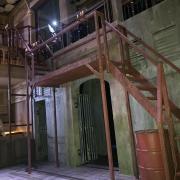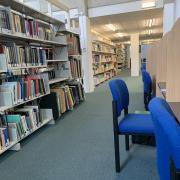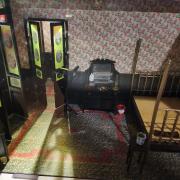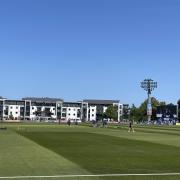
Wilton’s Music Hall, situated in London’s East End, is home to a variety of performances like plays, operas, magic shows, puppetry and dance shows, and has been since around 1850, when the main hall was constructed.
If you visit the hall now, perhaps to see the current production of The Box of Delights, the building stands as it was when the hall was at its prime, complete with all the old awnings and paintings, the bar outside and the viewing gallery, just with a few stage lights and a lighting deck added. Although it is quite easy to find now- down Graces Alley- the Hall used to be completely enclosed. In fact, its life began as five houses, built in the 1690s.
1 Graces Alley was the largest of the five houses, and is now the venue’s bar, where a variety of alcoholic and non-alcoholic drinks are available, as well as a range of bar snacks. The building’s use has not changed dramatically- in the first half of the 18th Century it was an ale house that served Scandinavian sea captains, as the building was near the old ports. Around 1826 the bar came to be known as the Mahogany Bar, which it is still referred to today, as the Landlord was allegedly the first to install mahogany fittings in his bar. In 1839 the first concert room was built behind this bar, hence why the venue was not visible from the street outside.
The venue was bought by its namesake, John Wilton, in 1850, who built the grand music hall in 1853. This was replaced by his “Magnificent Music Hall” in 1859, complete with mirrors and chandeliers. When you enter the space today, these furnishings can be easily imagined but sadly were lost when a fire occured in 1877. This left the hall badly damaged, with just the four walls and ten barley twist columns that still support the gallery today. The hall was rebuilt, but didn’t alter much from the original design. However, it was not built to fire regulations which was perhaps the reason why it then shut its doors.
The hall was next used by the Methodist church from 1888-1956, where it was renamed “The Mahogany Bar Mission” and aimed to help some of those living in extreme poverty the East End was subjected to at the time. They ran a soup kitchen during the Great Dock Strike of 1889, and fed thousands of starving families. The Mission stayed open during the Mosley March (which occured very nearby on Cable Street) and the Blitz and helped people of all ethnicities and creeds.
The hall was threatened with demolition in the early 1960s, when the London County Council planned to demolish the whole area as all the businesses had moved out. However, a campaign was made to save it and, after Spike Milligan promoted a BBC documentary on the hall, restoration began in 1982 when the London Music Hall Trust was formed. Since these first restorations, the building has been used by many for its undeniable atmosphere and has continued to be put back to what it would’ve been like in the 1860s.
A visitor to the site that I interviewed stated that “it is magical, like stepping back in time. I can’t believe that it has survived all these years”. Although the building is still rickety and stripped back, it is now completely safe to the public and is home to a variety of performances as well as an interesting and in-depth history
Eleanor Press, Sydenham High School



























